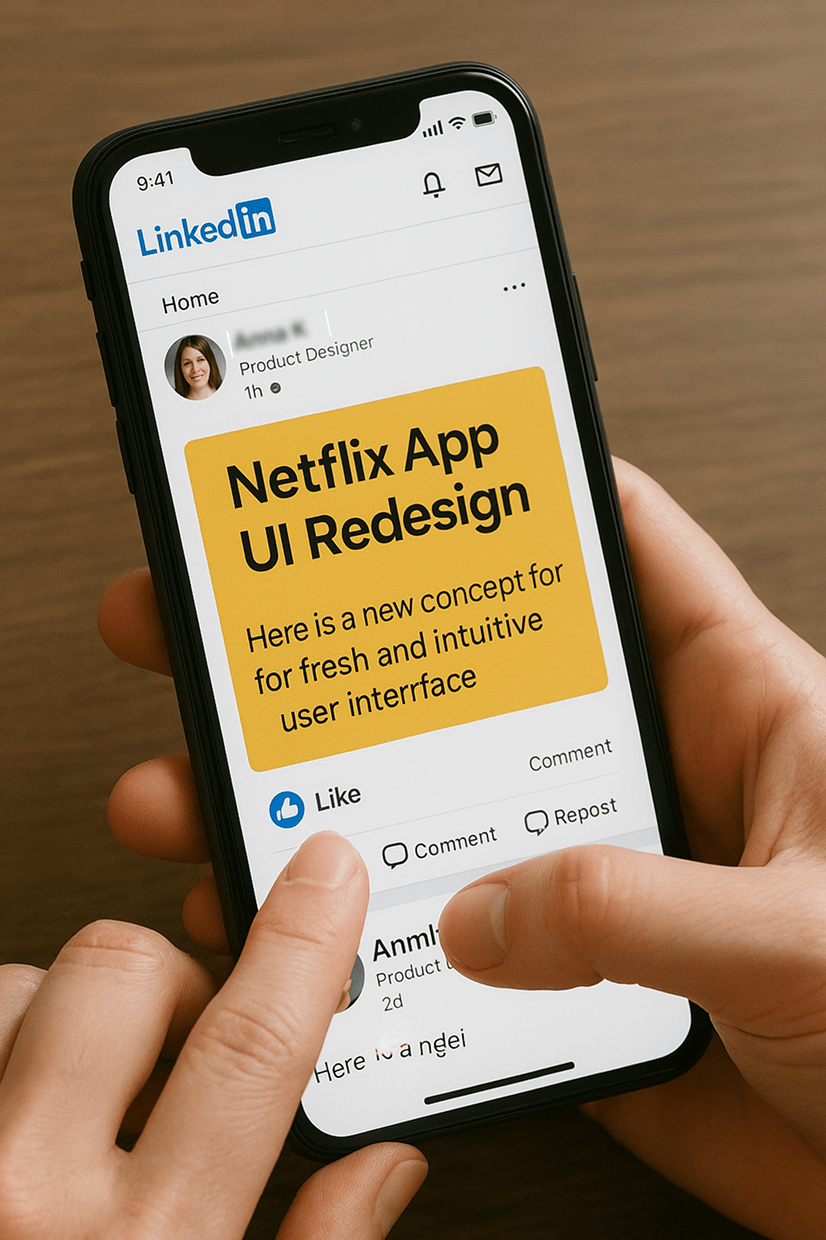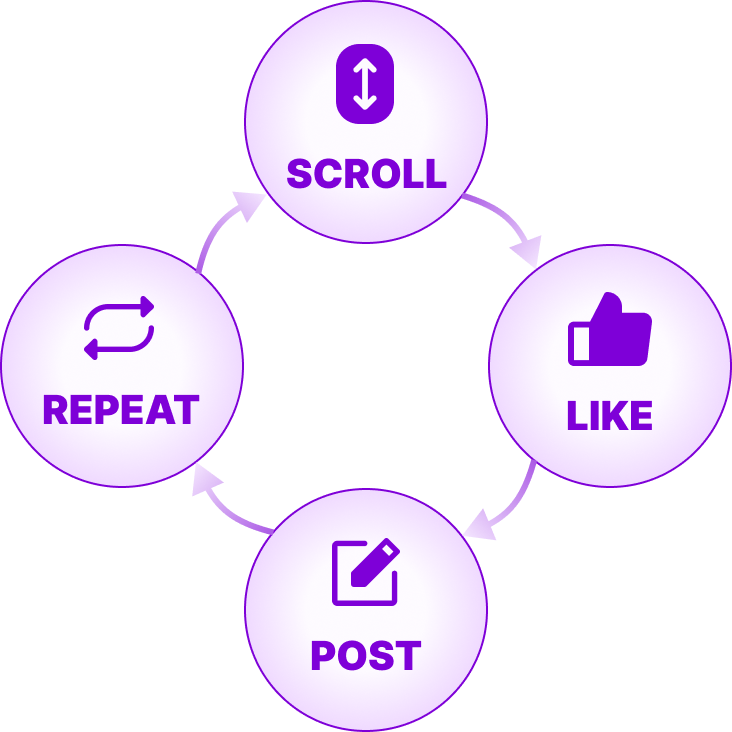The Illusion of Progress: Are We Creating or Competing?
- Karuna Solanki

Another day, another post of ‘Why is Apple’s call UIs are different?’ OR ‘Pinterest's UX is still broken’ OR ‘Design of a safety pin from 1849 till 2025, still the same” OR ‘The Laws of UX’ OR ‘Redesigning of Netflix screens’ and so many ORSSSSSS!. We feel so relatable at that very moment, we can't pull back our hands from liking or either reposting them.
Can we just pause for a second?
I just want you to think, are we really growing as designers - personally or professionally - or just feeding the machine to be seen and accepted by the community?
Social Acceptance
It is a fundamental concept that represents a level at which any individual is accepted, appreciated, included or valued for their identities, beliefs and values in a society.
Are we really trapped in the Loop?

The heading simply may confuse few but it also might have a chance to give a clear picture of our own thought process of where we are leading to. Maybe we want this loop?
Social media has become the reviewal board for the designs. In some cases, instead of clarifying and getting the critiques from real users or stakeholders, we chase for the comments like “Clean UI” OR “Much better than the original” or commenting down in capital letters “DESIGN” to get the 100+ onboarding UI screens.
Most of the posts are designer-focused rather than user-focused. We’re solving made-up problems for imaginary user group that doesn’t exist, just to stay in the algorithm’s good books. Recreating the Netflix screens knowing that the target base of Netflix is already very high and of course, building a product/service like that took sleepless nights of developers, designers, project managers, owners and many more. A redesign is meaningless without knowing why certain choices were made (tech constraints, business models, user demographics). Do these posts show actual process, research or real constraints? Or is it just shiny UI, mock problems, and dopamine? Are we deepening our understanding of real-world UX problems?

It is easy to fall for performative UX where people chase the reality of social acceptance and a belief that they are recognised and acknowledged for the work they post. Numerous case studies are posted where there is no real context, personas are pulled from thin air, and UI mockups are created for products that were never used, tested, or even needed.
Performative UX
It means designing products or services just to look good or get praise, rather than actually making them easy and helpful for real users.
It’s like when someone pretends to care about something just to impress others, but doesn’t really do the work to fix problems.
We have to validate rather than assuming!
We should ask ourselves - are we really solving problems in real life like this? or are we among those who crave for validations and activate their authenticity to get a good job. Therefore, that job would of course not be where your grandma needs help using a new app, or your neighbor is confused by a digital form. “You” should be the one starting from your own house looking for realistic issues and doing the groundwork, solving then and there.
So… Again, Are we all just faking It?
Not intentionally. (I might sound contradictory here, but that’s the reality). We want to stay visible. We want opportunities. We want to grow. But somewhere along the line, we started designing for social media instead of designing for people.
And that’s where things get blurry.
The truth? Not every project has to be posted. Not every opinion needs a carousel. Visibility is nice. But vanity isn’t growth.
So the next time you feel that itch to redesign Spotify again or post a take on Apple’s UX decisions, pause. Ask:
Is this for me, or for the algorithm?
Does it help someone? Did I learn something? Will it make me better, not just visible?
That’s real UX. That’s real growth. Design is more than aesthetics.